Expression of Kir4.1 and Kir5.1 inwardly rectifying potassium channels in oligodendrocytes, the myelinating cells of the CNS
- PMID: 26879293
- PMCID: PMC5225165
- DOI: 10.1007/s00429-016-1199-8
Expression of Kir4.1 and Kir5.1 inwardly rectifying potassium channels in oligodendrocytes, the myelinating cells of the CNS
Abstract
The inwardly rectifying K+ channel subtype Kir5.1 is only functional as a heteromeric channel with Kir4.1. In the CNS, Kir4.1 is localised to astrocytes and is the molecular basis of their strongly negative membrane potential. Oligodendrocytes are the specialised myelinating glia of the CNS and their resting membrane potential provides the driving force for ion and water transport that is essential for myelination. However, little is known about the ion channel profile of mature myelinating oligodendrocytes. Here, we identify for the first time colocalization of Kir5.1 with Kir4.1 in oligodendrocytes in white matter. Immunolocalization with membrane-bound Na+/K+-ATPase and western blot of the plasma membrane fraction of the optic nerve, a typical CNS white matter tract containing axons and the oligodendrocytes that myelinate them, demonstrates that Kir4.1 and Kir5.1 are colocalized on oligodendrocyte cell membranes. Co-immunoprecipitation provides evidence that oligodendrocytes and astrocytes express a combination of homomeric Kir4.1 and heteromeric Kir4.1/Kir5.1 channels. Genetic knock-out and shRNA to ablate Kir4.1 indicates plasmalemmal expression of Kir5.1 in glia is largely dependent on Kir4.1 and the plasmalemmal anchoring protein PSD-95. The results demonstrate that, in addition to astrocytes, oligodendrocytes express both homomeric Kir4.1 and heteromeric Kir4.1/Kir5.1 channels. In astrocytes, these channels are essential to their key functions of K+ uptake and CO2/H+ chemosensation. We propose Kir4.1/Kir5.1 channels have equivalent functions in oligodendrocytes, maintaining myelin integrity in the face of large ionic shifts associated with action potential propagation along myelinated axons.
Keywords: Astrocyte; Glia; Inward rectifying potassium channel; Oligodendrocyte; Potassium regulation; White matter.
Conflict of interest statement
The authors declare that they have no conflicts of interest. Informed consent All procedures performed in studies involving animals were in accordance with the ethical standards of the institution at which the studies were conducted. Animal rights All applicable international, national, and/or institutional guidelines for the care and use of animals were followed.
Figures
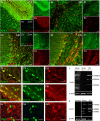

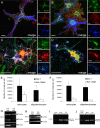
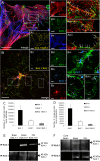
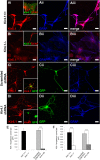
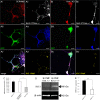
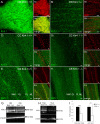

Similar articles
-
Inwardly rectifying potassium channels (Kir) in central nervous system glia: a special role for Kir4.1 in glial functions.J Cell Mol Med. 2006 Jan-Mar;10(1):33-44. doi: 10.1111/j.1582-4934.2006.tb00289.x. J Cell Mol Med. 2006. PMID: 16563220 Free PMC article. Review.
-
Oligodendrocytes control potassium accumulation in white matter and seizure susceptibility.Elife. 2018 Mar 29;7:e34829. doi: 10.7554/eLife.34829. Elife. 2018. PMID: 29596047 Free PMC article.
-
A critical role for the inward rectifying potassium channel Kir7.1 in oligodendrocytes of the mouse optic nerve.Brain Struct Funct. 2020 Apr;225(3):925-934. doi: 10.1007/s00429-020-02043-4. Epub 2020 Feb 21. Brain Struct Funct. 2020. PMID: 32086565 Free PMC article.
-
Kir5.1 regulates Kir4.2 expression and is a key component of the 50-pS inwardly rectifying potassium channel in basolateral membrane of mouse proximal tubules.Am J Physiol Renal Physiol. 2025 Feb 1;328(2):F248-F257. doi: 10.1152/ajprenal.00178.2024. Epub 2025 Jan 2. Am J Physiol Renal Physiol. 2025. PMID: 39745541 Free PMC article.
-
Role of inwardly rectifying K+ channel 5.1 (Kir5.1) in the regulation of renal membrane transport.Curr Opin Nephrol Hypertens. 2022 Sep 1;31(5):479-485. doi: 10.1097/MNH.0000000000000817. Epub 2022 Jul 11. Curr Opin Nephrol Hypertens. 2022. PMID: 35894283 Review.
Cited by
-
Ginsenoside Rg1 Prevents PTSD-Like Behaviors in Mice Through Promoting Synaptic Proteins, Reducing Kir4.1 and TNF-α in the Hippocampus.Mol Neurobiol. 2021 Apr;58(4):1550-1563. doi: 10.1007/s12035-020-02213-9. Epub 2020 Nov 19. Mol Neurobiol. 2021. PMID: 33215390 Free PMC article.
-
Kir5.1 channels: potential role in epilepsy and seizure disorders.Am J Physiol Cell Physiol. 2022 Sep 1;323(3):C706-C717. doi: 10.1152/ajpcell.00235.2022. Epub 2022 Jul 18. Am J Physiol Cell Physiol. 2022. PMID: 35848616 Free PMC article. Review.
-
DNA methylation changes in glial cells of the normal-appearing white matter in Multiple Sclerosis patients.Epigenetics. 2022 Nov;17(11):1311-1330. doi: 10.1080/15592294.2021.2020436. Epub 2022 Jan 30. Epigenetics. 2022. PMID: 35094644 Free PMC article.
-
Potassium channel gene associations with joint processing speed and white matter impairments in schizophrenia.Genes Brain Behav. 2017 Jun;16(5):515-521. doi: 10.1111/gbb.12372. Epub 2017 Mar 13. Genes Brain Behav. 2017. PMID: 28188958 Free PMC article.
-
Roles of Ion Channels in Oligodendrocyte Precursor Cells: From Physiology to Pathology.Int J Mol Sci. 2025 Jul 29;26(15):7336. doi: 10.3390/ijms26157336. Int J Mol Sci. 2025. PMID: 40806469 Free PMC article. Review.
References
Publication types
MeSH terms
Substances
Grants and funding
LinkOut - more resources
Full Text Sources
Other Literature Sources

